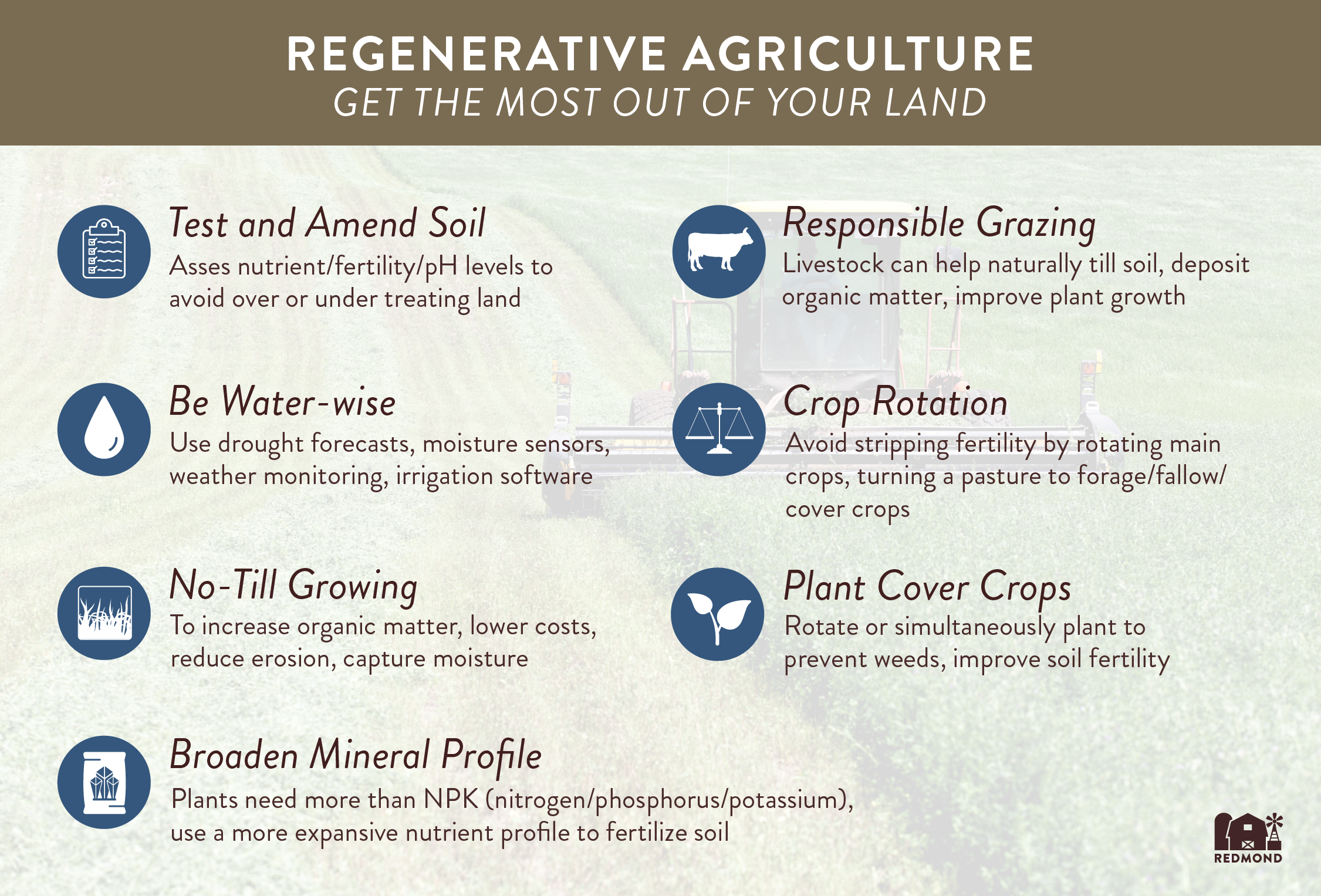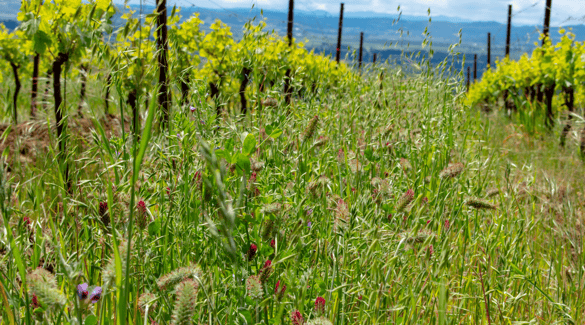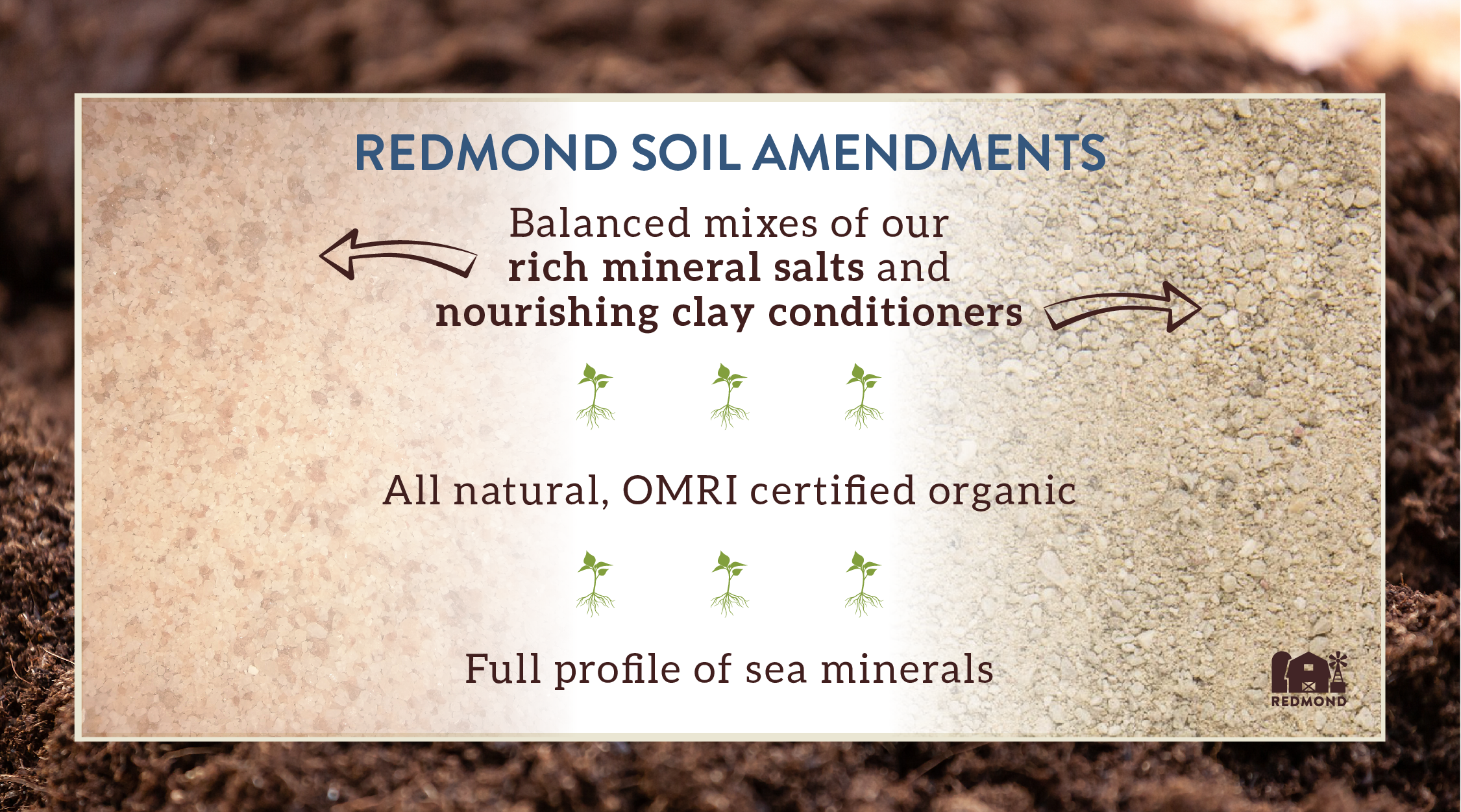Regenerative agriculture is no passing trend. It is a comprehensive movement among farmers to more deeply understand how we can all responsibly get the most out of our land. Preserving the fertility of our soil is in everyone's best interests, consumers and producers alike. Let's learn some simple regenerative practices that can help increase farming production as well as build health into your soil year after year.

Test and Amend Soil
Soil testing is an all-too-important step for any growing operation. Redmond's fast and easy Soil Test Kit can help your crops start off on the right track. In order to really dive into regenerating your soil, first find out where your levels are at.
Soil testing:
- Measures nutrient levels in the soil
- Identifies variations in your land (using multiple, properly labeled samples)
- Measures soil pH
- Helps you know which soil amending program you should use for your specific operation
- Reduces the chance of over-treating or under-treating your soil
- Helps produce higher quality and higher yielding crops
Be Water-wise
Responsible water usage not only saves money and resources, but can also help reduce the leaching of valuable minerals from your soil.
- Use drought forecasting tools from the USDA to help you select the right crops for your location and moisture levels.
Weather Monitoring Irrigation Methods
Using soil moisture sensors, weather monitoring, and irrigation software, you can have a winning combination to help you plan a water-wise irrigation schedule.
- Here is a look at independent reviews for smart irrigation controllers for residential or commercial use
To Till or Not To Till?
Modern farming operations are starting to notice the benefits of not tilling before planting. Leaving your tilling equipment parked can help reap major benefits this growing season.
Decaying Organic Matter
One of the biggest misconceptions surrounding the no-till method, is thinking that decaying organic matter on the surface won’t reach the root zones unless you till. Not true! Old plant matter will still decay, break down, and distribute nutrients to your root zones, even without tilling.
Reduce Fuel and Labor Costs
Reducing the numbers of passes you take over your fields cuts down on labor costs, fuel usage, and machinery wear and tear. Save yourself time and unnecessary costs by giving no-till a try sometime. Plus, reducing the passes of heavy machinery over your land better preserves the natural soil structure already in place.
Less soil erosion
Leaving plant residue on the surface of your soil greatly reduces erosion from wind and weather. Check out this side by side video of un-tilled vs. tilled soybean fields under high winds!
The 1st video shows a planted field of corn on corn no-till with debris blowing in 40 mph winds with gusts up to 60. The 2nd video is a planted field of corn on tilled bean stubble in the same windy conditions 1 mile away. #plant18 #servitech #erosion #stewardship pic.twitter.com/3DCqN1xHgO
— Clark Poppert (@Clark_Agronomy) April 30, 2018
This video shows soybean ground that was worked and planted to corn in 40 mph winds with 60 mph gusts. Earlier tweet showed same weather conditions but corn planted into no-till Corn stubble. #plant18 #servitech #erosion #stewardship pic.twitter.com/KlVJJOyrC6
— Clark Poppert (@Clark_Agronomy) April 30, 2018
Better Moisture Capture
Leftover plant residue efficiently holds precipitation onto your fields, especially during the winter and early spring. Old plant stocks act as natural snow fences and force storms to drop snow onto your land instead of blowing over and stripping your topsoil of moisture, even during the off season.
Plant Cover Crops
Cover crops are a group of plants that can either be grown during the off season, or as strategic undergrowth with taller crops. Below is an example of growing cover crops concurrently with a main crop (oats, clover, and vetch planted in between rows in a vineyard).

Cover crops can provide many benefits for any growing operation:
- Weed prevention
- Improve soil fertility
- Reduce soil erosion (from wind and water)
- Reduce water runoff
- Harmful pest prevention
- Add biomass to your soil
- Attract helpful pollinators
Most cover crops are in the legume family and help store vital nitrogen in their roots.
- Browse through cover crop planting guides from the USDA
Responsible Grazing
Livestock grazing can help prepare pastures for the next growing season, especially when rotating crops (see crop rotation below).
Grazing animals can help:
- Naturally till the soil
- Deposit organic matter
- Improve plant production after grazing
It is important, however, to avoid overgrazing and give plants time to recover and rest after a grazing session. A pasture should receive anywhere from 30-90 days of recovery before you allow grazing to continue. You can also divide fields into cells and graze sections at a time to avoid overgrazing.
Do you need your grazers’ help in certain sections of your pasture? Disperse Redmond Minerals in problem areas and your grazers’ natural cravings will attract them and encourage them to get them to work!
Crop Rotation
For thousands of years, farmers have recognized that you cannot grow the same crop on the same plot of land indefinitely. The tried and true practice of crop rotation is a beneficial way to renew your pastures. Different crops utilize soil nutrients at different rates and you can easily strip fertility from your land by sticking with the same crop every year.
Crop rotation can take many forms:
- Planting legume cover crops during the off-season
- Turning a pasture over to forage for livestock for a season
- Turning a pasture to fallow and leaving unsown for a season
- Rotating between a few different main crops from year to year (make sure to research the nutrient needs of each crop and your local climate to schedule appropriately)
Crop rotation:
- Improves soil fertility
- Encourages biodiversity on your land
- Increases plant productivity
- Produces higher quality crops
Broaden Your Mineral Profile
It is easy to get caught in a Nitrogen-Phosphorus-Potassium (NPK) rut when it comes to fertilizing your land. Plants need more than just NPK in order to thrive. In fact, overusing these products has adverse effects on your local water sources and downstream (i.e. excessive nitrogen use in farming causes seasonal toxic algae blooms and aquatic dead zones.) Instead of flushing your land with excess NPK, invest in the health of your soil microbes with trace minerals.
Providing your soil with a broader mineral profile than just NPK (including trace minerals) will help you reap many benefits:
- Increased total digestible nutrients in your plants
- Improved your plants’ ability to use nitrogen already contained in the soil
- Higher plant yields
- Improved soil microbe health
- More delicious crops with increased nutrition all the way up the food chain
Get The Most From Your Land With Redmond Minerals
Redmond Minerals has supported healthy farming operations across the country since the 1950s.

Our mineral products for soil and livestock, naturally contain a full spectrum of sea minerals that nourish the world from the ground up.
Redmond Minerals excels at helping growers:
- Improve soil fertility
- Invigorate soil microbe activity
- Increase total digestible nutrients (TDN)
- Increase relative feed value (RFV)
- And produce higher yields for wide variety of crops
For a deeper dive into the benefits of regenerative agriculture, visit our friends over at White Oaks Pastures to learn more.
Contact us today at  to find out how Redmond Minerals can help you get the most out of your land!
to find out how Redmond Minerals can help you get the most out of your land!
© 2023 Redmond Minerals Inc.
